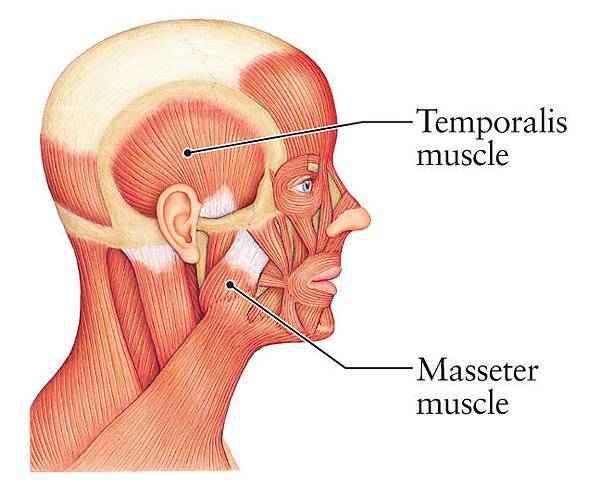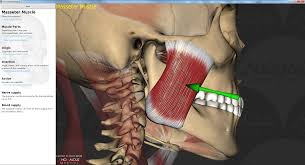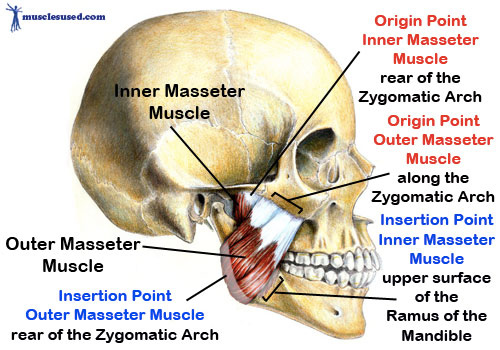










Masseter muscle
Origin:Zygomatic arch and maxilla.
Insertion:coronoid process, Ramus of mandible, cementomaxillary tendon and cementomandibular tendon.
Artery:masseteric artery
Nerve:mandibular nerve(V3)
Actions:elevation(as in closing of the mouth)and protraction of mandible.
Antagonist:Platysma muscle.
In human anatomy, the masseter is one of the muscles of mastication. In the animal kingdom, it is particularly powerful in herbivores to facilitate chewing of plant matter. The most obvious muscle of mastication is the masseter muscle since it is the most superficial and one of the strongest.
The masseter is a thick, somewhat quadrilateral muscle, consisting of two heads, Superficial and Deep. The fibers of the two heads are continuous at their insertion.
The superficial head, the larger, arises by a thick, tendinous aponeurosis from the zygomatic process of the maxilla, and from the anterior two-thirds of the inferior border of the zygomatic arch. Its fibers pass downward and backward, to be inserted into the angle of the mandible and inferior half of the lateral surface of the ramus of the mandible.
The deep head is much smaller, and more muscular in texture. It arises from the posterior 3rd of the lower border and from the whole of the medial surface of the zygomatic arch. Its fibers pass downward and forward, to be inserted into the upper half of the ramus and the lateral surface of the coronoid process of the mandible. The deep head of the muscle is partly concealed, anteriorly, by the superficial portion. Posteriorly, it is covered by the parotid gland.
Along with the other three muscles of mastication(Temporalis, Medial pterygoid and Lateral pterygoid), the Masseter is innervated by the mandibular division(V3)of the trigeminal nerve.
The innervation pathway of the Masseter is:gyrus precentralis à genu capsula interna à nucleus motorius nervi trigemini à nervus trigeminus à nervus mandibularis à musculus masseter.
The action of the muscle during bilateral contraction of the entire muscle is to elevate the mandible, raising the lower jaw. Elevation of the mandible occurs during the closing of the jaws. The masseter parallels the medial pterygoid muscle, but it is stronger.



 留言列表
留言列表
